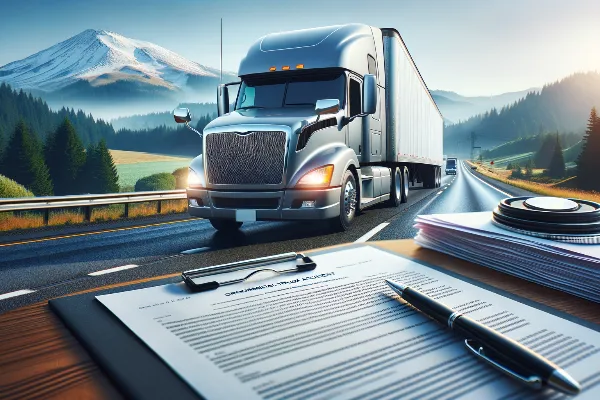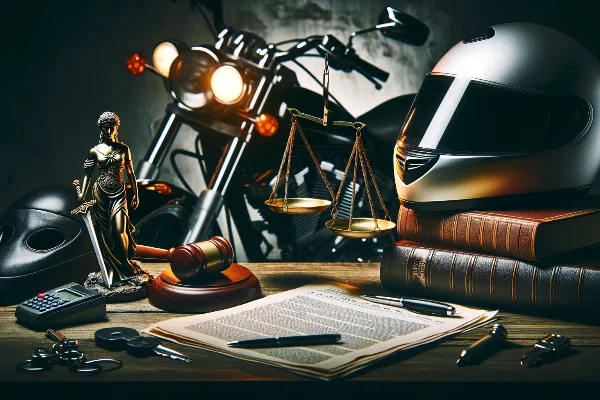Oregon Injury Law Blog
Tag: Insurance
- Home
- Oregon Injury Blog Tag: Insurance
- Page 1 of 2
Maximize Your Insurance Benefits After Oregon Bicycle and Pedestrian Accidents
Q: Will my insurance pay my bills if I am hit by a car and injured while riding my bicycle or walking?
A: It depends on what kind of insurance you carry. If you have your own car insurance, an Oregon bicycle accident injury lawyer can help you use your automobile's PIP ("personal injury protection") insurance to immediately provide coverage even if you injured while riding a bicycle or walking.
Read MoreTags:
automobile's pip bicycle accident injury lawyer bicycle accidents car insurance comparative negligence contributory negligence damages driver's insurer faq fault laws health insurance insurance liability medical bills medical expenses motor vehicle accidents pedestrian accidents personal injury pip subrogationEssential Steps for Reporting Car and Truck Accidents in Oregon
You’ve been in a car or truck accident. Your vehicle is damaged, and maybe you are injured. Occupants might be injured. Other drivers may have injuries. Chances are, after a car accident you aren’t thinking about filing paperwork. Still, Oregon law has reporting requirements after a car crash or truck crash that can impact your ability to recover for your injuries and property damage later.
Read MoreTags:
attorney fees car accidents commercial trucking accidents damages department of transportation dmv dmv report form evidence insurance liability liability for not investigating motor vehicle accidents oregon car accident oregon department of transportation personal injury police reports property damage public property injury reporting requirements tractor trailer accidents traffic citation truck crashArbitration vs. Mediation: Choosing the Right Path for Dispute Resolution
Alternative Dispute Resolution ("ADR") is becoming an increasingly important option in many jurisdictions. ADR refers to efforts to find methods that are outside the court system to resolve civil disputes. These methods may be advantageous to the courts and to the parties involved since they may resolve a dispute in a faster, more cost-effective manner and reduce or eliminate the need for participation by the court system.
Read MoreTags:
adr alternative dispute resolution arbitration attorney fees auto accidents binding arbitration car accidents civil cases comparative negligence contributory negligence court system criminal caseload damages dollar amount evidence fault laws insurance judges or jury juries lawsuits liability majority vote mediation mini-trial procedure non-binding arbitration personal injury personal injury claims pip settlement smaller civil cases three arbiter panel trial underinsured uninsured work-related injuriesOregon Letters of Protection: Essential Guide for Personal Injury Cases
During the time of treatment, insurance may or may not be paying the bills, but medical providers still need to get paid. To protect their interests, these medical providers may request a “Letter of Protection” from the personal injury lawyer to ensure that their bills get paid at the time of settlement.
Read MoreTags:
attorney car accident client damages faq financial breathing room insurance legal guide letter of protection liability lien against funds recovered lost wages medical expenses medical provider motor vehicle accidents negligent driver's insurance non-medical bills oregon letter of protection personal injury personal injury cases pip settlement trial work-related injuriesRising Pedestrian Accidents in Oregon: Causes, Consequences, and Legal Help
Increasingly, Oregon sees an increased number of pedestrian injuries or even deaths from being struck by motor vehicles. Every 88 minutes, a pedestrian dies in a car-related accident. Every year, roughly 6,000 pedestrians lose their lives or are injured in accidents where they are hit by motor vehicles. The most common location for these accidents is at intersections or crosswalks when motorists don't yield the right-of-way or stop for traffic devices like stoplights or stop signs.
Read MoreTags:
brain injuries brain injury car accidents cell phones crosswalks damages death distracted drivers drunk driving duty of care inattentive drivers inexperienced drivers injury insurance intersections intoxicated drivers legal guide medical expenses motor vehicle accidents motor vehicles negligent drivers pedestrian accidents personal injury poor weather radio reckless drivers right-of-way safety speeding stoplights stop signsMaximizing Your Oregon Underinsured Motorist Coverage: Key Insights
Maximizing Your Oregon Underinsured Motorist Coverage: Key Insights
Read MoreTags:
at-fault driver bicycle accidents car accidents comparative negligence contributory negligence damages fault laws insurance liability liability insurance liability insurance policy motorcyle accidents motor vehicle accidents oregon auto insurance oregon law personal injury uim benefits uim carrier uim carrier's consent underinsured underinsured motorist (uim) underinsured motorist (uim) coverage uninsured uninsured motorist (um) uninsured motorist (um) policyHow to Choose the Right Car Insurance in Oregon: A Comprehensive Guide
If you're looking to get the best car insurance you can to drive in Oregon, it's important to consider several things. Cost is just one factor, but coverage limits are also very important. These considerations can help you maintain great coverage while still finding reasonably priced Oregon car insurance policies.
Read MoreTags:
bundling car accidents cost insurance insurance broker motorcyle accidents motor vehicle accidents no-fault pip shop around underinsured uninsuredHow to Accurately Value Your Personal Injury Case in Oregon
Valuing any personal injury case requires consideration of many factors, and Personal Injury cases are no exception. The first determination in valuing an Oregon is determining fault. Who is at fault for the accident? Sometimes the answer is not entirely clear. Even though you may share fault (comparative negligence), you still may be entitled to compensation.
Read MoreTags:
amount of insurance available bicycle accidents brain injury car accidents commercial trucking accidents comparative negligence contributory negligence damages dog bites earning capacity faq fault fault laws financial recovery healing hit-and-run insurance liability loss of earning capacity loss of wages medical expenses motorcyle accidents negligence non-economic damages oregon accident claim pain and suffering permanency of injuries personal injury physical therapy scope slip and fall surgery valuation work-related injuries wrongful deathBusting the Bias: Motorcycle Accident Victims Deserve Fair Compensation
Juries, insurance adjusters, judges, and even lawyers representing motorcycle accident victims sometimes maintain the subtle bias that motorcyclists "deserve" injuries because they forego the safety of a four-wheeled, enclosed vehicle. At Pacific Injury Law Firm, we recognize such biases and refuse to minimize the claims of the motorcycle accident victim. If a motorcycle accident victim is not able to obtain complete and fair compensation, we will take the case to trial.
Read MoreTags:
attorneys bias car accidents comparative negligence contributory negligence damages enclosed vehicle faq fault laws four-wheeled vehicles insurance insurance adjusters judges juries just compensation liability motorcycle accident cases motorcycle accident victims motorcyle accidents motor vehicle accidents pain and suffering personal injury safety settlement settlement mill law firms trialMastering Depositions: Essential Insights for Non-Lawyers in Litigation
A deposition is an oral testimony taken under oath before a trial or arbitration. It is customary that depositions be taken of the parties to a lawsuit. Often depositions are also taken of witnesses and others who might testify at trial. Even though it often takes place in a conference room or office, and the setting is somewhat informal, it is a very important event in any lawsuit.
Read MoreTags:
accident injuries alternative dispute resolution auto accident case car accidents court reporter damages deposition discovery discovery process educational background employment background evidence faq insurance juries lawsuit legal guide lost wages medical background medical evidence medical expenses medical records oral testimony personal injury police reports settlement trial witness testimony work-related injuriesCategories
Recent Posts













